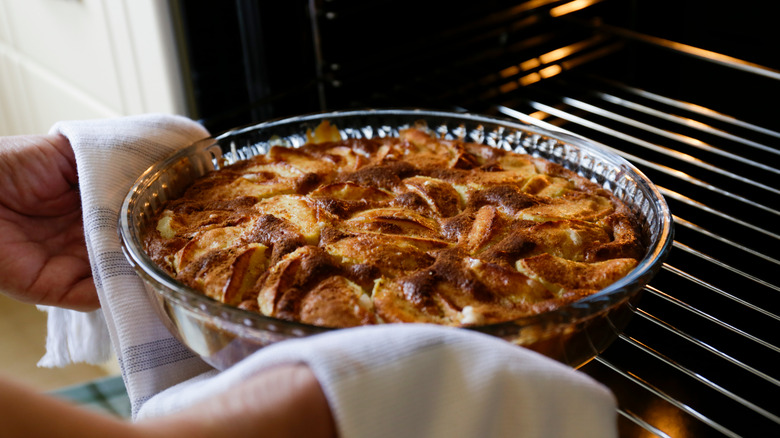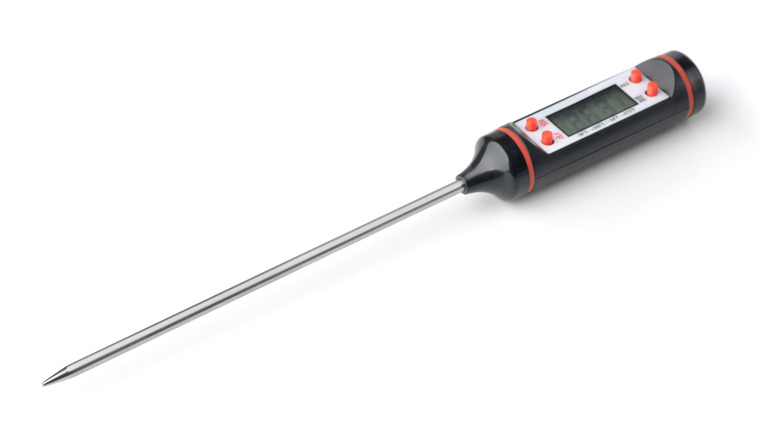The Importance Of An Instant-Read Thermometer When Baking Pie
Pie is one of those classic desserts we can never say no to; its buttery, flaky crust and sweet, varied fillings that range from banana cream to peanut butter to chocolate chess sing us their siren song time and time again. Delicious as a dessert or delightful with a strong cup of afternoon coffee, it is a great option to pick up from your favorite bakery. But it can be even more fun to take on the task of making pie at home — especially over Thanksgiving, when iconic pumpkin, pecan, and sweet potato varieties (via Real Simple) are more than welcome either at your own celebration or toted to someone else's.
If this isn't your first rodeo with baking homemade pie, then you're already familiar with some of the secrets to pie-making success, from blind-baking for a crispier crust to thoroughly cooling the treat before slicing it. But have you ever thought about taking your pie's temperature?
A thermometer can help you avoid the fate of an overbaked pie
There are many reasons to keep an instant-read thermometer on hand. Whether taking the temperature of a roast, the oil in which you're frying doughnuts, or homemade caramel, this tool will help you to not undercook or overcook anything (via Serious Eats). And why is an instant-read thermometer better for pies, as opposed to the stick types, typically used for making candy? Well, those take time to register temperature, and no one wants to stand in front of a hot oven attempting to read the temp of a roast chicken. According to Serious Eats, a high-quality digital thermometer can register an accurate temperature in about one second.
And while you've likely never thought about taking the temperature of a baked good, America's Test Kitchen argues that this tool can make the difference between a good pie and a great one. For example, when baking egg-based fillings, a thermometer can provide insight on when to pull the treat from the oven, preventing overbaking and the resulting scrambling of the eggs inside the filling. The outlet counsels taking the temperature of fillings towards the end of baking, checking for a 170°F temperature for curd, 175°F for pumpkin, 180°F for cream, and 185°F to 190°F for pecan filling. The method works best for single-crust or latticed pies, but if you need to check a double-crust pie, the probe should leave only a small hole (via Kosher.com).

